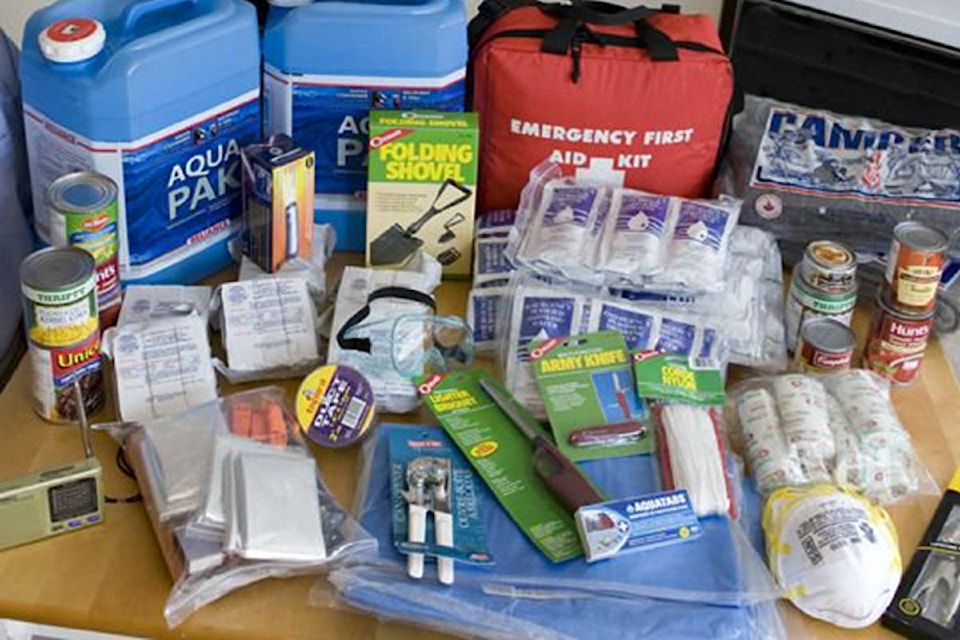With the North Okanagan experiencing a long stretch of extreme heat and a very dry spring, the Regional District of North Okanagan (RDNO) is recommending that residents complete or review their emergency plans and kits.
The RDNO is sharing resources and information that can help people prepare themselves and their families in the event of an emergency, like a wildfire.
Write an Emergency Plan for your Household
An emergency plan is a playbook for how you and your household will respond to a disaster. The planning process helps you pre-arrange for possible places you could stay, such as with family and friends outside of the endangered areas.
Get started by downloading PreparedBC’s fill-in-the-blanks emergency plan. It will compile the vital information you’ll need to respond, as well as establish how you’ll communicate and reconnect with loved ones if separated.
Use the guides on the Prepared BC website to help with your planning.
Build an Emergency Kit and Grab-and-Go Bag
In the event of an emergency, you may need to leave your home with little notice. Gather and organize your supplies now so that you’re prepared if a disaster strikes. Keep these supplies in containers that are easy to transport and store them in an area that’s easy to get to. Consider the unique needs of your household, such as items for your pets, children, and seniors. This may include:
* First aid kit and medications;
* Copy of your emergency plan, and copies of important documents, such as insurance papers;
* Cash in small bills;
* Contact information for family and friends;
* Seasonal clothing, sturdy footwear and emergency blanket;
* Pet food;
* Battery-powered or hand-crank radio;
* Battery-powered or hand-crank flashlight;
* Extra batteries;
* Personal toiletries and items, such as a toothbrush, or an extra pair of glasses or contact lenses;
* Non-perishable food: three-day to one-week supply, with a manual can opener;
* Water: four litres per person, per day for drinking and sanitation;
* Phone charger, battery bank or inverter.
Read more about emergency kits and grab-and-go bags online: https://www2.gov.bc.ca/gov/content/safety/emergency-preparedness-response-recovery/preparedbc/build-an-emergency-kit-and-grab-and-go-bag#grabandgo
Plan for your Large Pets and Livestock
If you have larger animals, like horses, research places that could receive them, as during an evacuation, you may not be allowed in to water and feed your hobby farm animals.
Registering your commercial farm under Premises ID can assist the Ministry of Agriculture and the Emergency Operations Centre in coordinating mass livestock provisions and assistance.
Additional Resources
These are only a few of the many ideas and actions you can take. Find more information at:
* Emergency Preparedness, Response and Recovery;
* Learn how to protect your home and property from wildfire on the Firesmart BC website;
* Subscribe to the RDNO’s Emergency Management e-newsletter.
A reminder that all open fires are prohibited, and the RDNO reminds residents that the B.C. government extended its restrictions to all campfires, Category 2 and Category 3 open fires on Wednesday, June 30.
READ MORE: 22 tickets issued for unlawful campfires as B.C. crews fight hundreds of wildfires
READ MORE: Know how to evacuate in event of fire, say B.C. emergency management officials
roger@vernonmorningstar.com
Like us on Facebook and follow us on Twitter.
